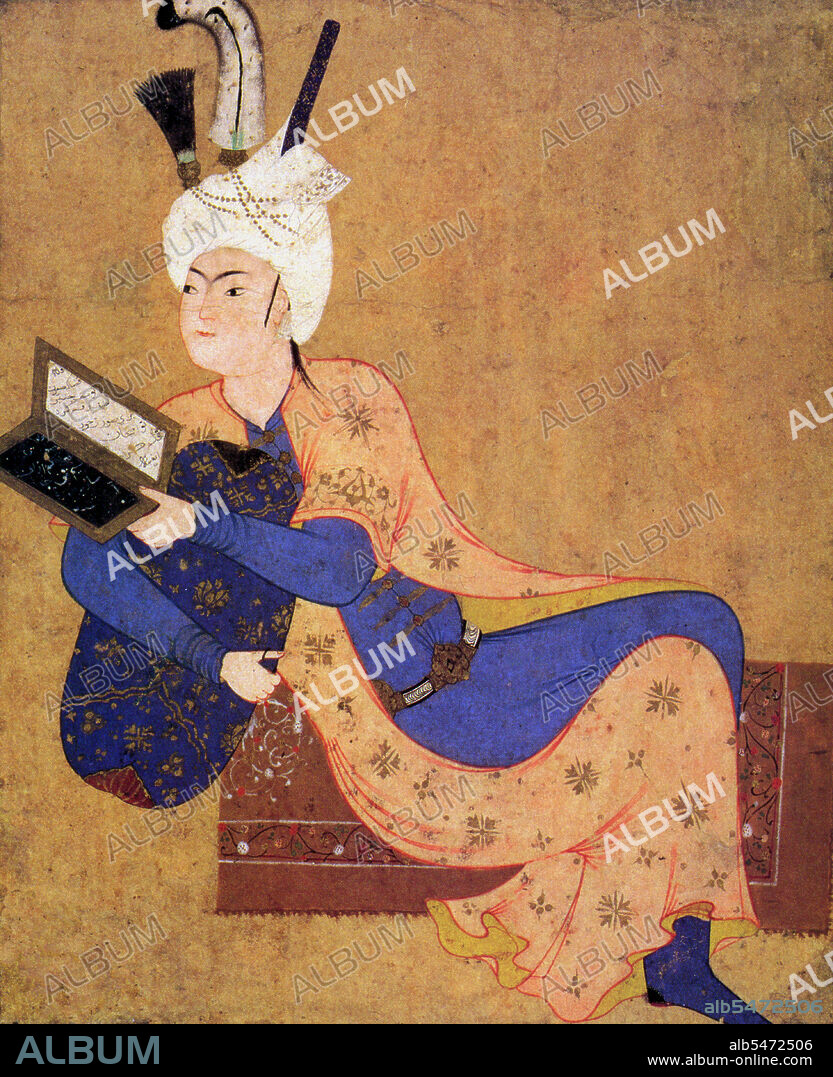alb5472506
A miniature painting, c. 1530 CE by Aqa Mirak, of a Tabriz prince in repose.

|
Add to another lightbox |
|
Add to another lightbox |



Title:
A miniature painting, c. 1530 CE by Aqa Mirak, of a Tabriz prince in repose.
Caption:
Tabriz was capital of the Safavid Empire from 1501 to 1548, during which time many great painters, such as Aqa Mirak, Mir Sayyid Ali and Dust Muhammad produced magnificent royal manuscripts. Safavid art set the standard for painting, literature and architecture, as well as ceramics, metal and glass. While of course nourished by Persian culture, much Safavid art was strongly influenced by Turkish, Chinese, Ottoman and Western cultures. The royal workshops of Tabriz were very influential, and illuminated and illustrated manuscripts spread throughout the empire. When the capital was transferred from Tabriz to Qazvin in 1548, the court artists fled to foreign courts, mostly Mughal or Ottoman.
Credit:
Album / Pictures From History/Universal Images Group
Releases:
Model: No - Property: No
Rights questions?
Rights questions?
Image size:
3800 x 4670 px | 50.8 MB
Print size:
32.2 x 39.5 cm | 12.7 x 15.6 in (300 dpi)
Keywords:
ANT. OR.: IRAN • ART • ARTISAN • ARTS • ASIA • ASIAN • CLOTHING: TURBAN • CRAFTS • CRAFTSMAN • CRAFTSMANSHIP • HEADGEAR: TURBAN • HISTORIA UNIVERSAL • HISTORIA • HISTORICAL • HISTORY • IRAN • IRANIAN • LEGEND • MUSLIM • MYTH: PERSIAN • PAINT • PAINTING • PERSIA • PERSIAN ART • PERSIAN MYTH • PERSIAN • READ • SAFAVIDS • SHAH ABBAS • TAHMASP • TURBAN
 Pinterest
Pinterest Twitter
Twitter Facebook
Facebook Copy link
Copy link Email
Email

